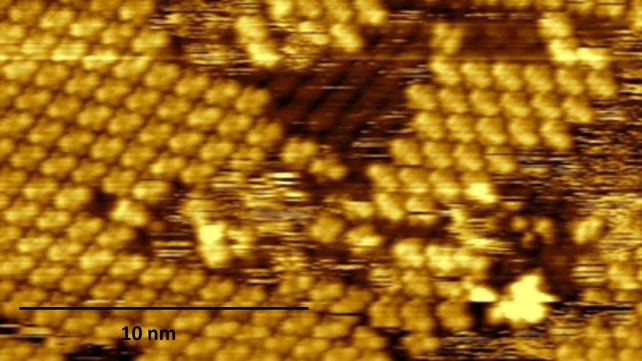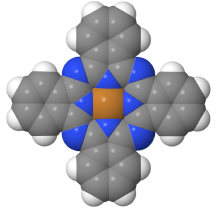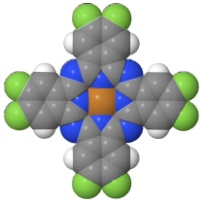 (a)
(a)
 (b)
(b)
 (c)
(c)

Supervisor: Doc. RNDr. Ivan Ošťádal, CSc.
Status: Available
Abstract:
Integration of organic materials into contemporary electronic technologies has being in progress on various levels for many years. Especially in development of active electronic components permanent decreasing of its size results in searching alternative solutions based on organic one- (1D) and two-dimensional (2D) molecular structures [1]. Intermolecular interactions and interactions with surface for chosen molecules and their synthesis were studied both experimentally and theoretically almost exclusively on metal surfaces [2]. With respect of a dominant role of silicon technologies in the present electronic industry, silicon surfaces as substrates for growing organic nanostructures seem to be of high interest. The surface molecular synthesis differs from “usual chemical situation”. It takes place in two dimensions among adsorbed molecules and sufficient molecular mobility is inevitable. Suitable surface morphology and interactions with molecules can be used for controlling a mechanism of self-organized growth of molecules.
A chemical reactivity of the silicon surface with organic molecules is rather high and strong molecular bonding excludes surface mobility. However silicon surfaces Si(111) and Si(100) can be modified by various metals in a form of surface reconstructions [3,4] which provide mobility of deposited molecules. Various reconstruction geometries can be used as a template for desired molecular growth. Intermolecular interactions represent the other factor which determines a form and stability of the final structure. Investigation of growing molecular structures on the metal passivated silicon surfaces is at the beginning in comparison with metal surfaces. Probably due to a more complex situation experimental results are limited so far. Experimental techniques of surface science – especially scanning tunneling microscopy (STM) in combination with atomic force microscopy (AFM) provide investigation of surface morphology and electron structure with atom resolution [5].
The experimentally oriented PhD thesis is focused on controlling self-organized growth of molecular structures by means of metal passivated silicon surfaces. An ultra-high vacuum system will be used for experiments – surface preparation, deposition of molecules and STM measurements. A research is supported by results obtained in the thin films group for planar organic molecules – copper phtalo-cyanines (CuPc) on surfaces Si(111)/In(√3×√3), Si(111)/In (4×1), Si(111)/Sn(√3×√3), Si(111)/Tl(1×1).
 (a)
(a)
 (b)
(b)
 (c)
(c)

MSc in physics, physical chemistry, solid state physics orientation is an advantage.